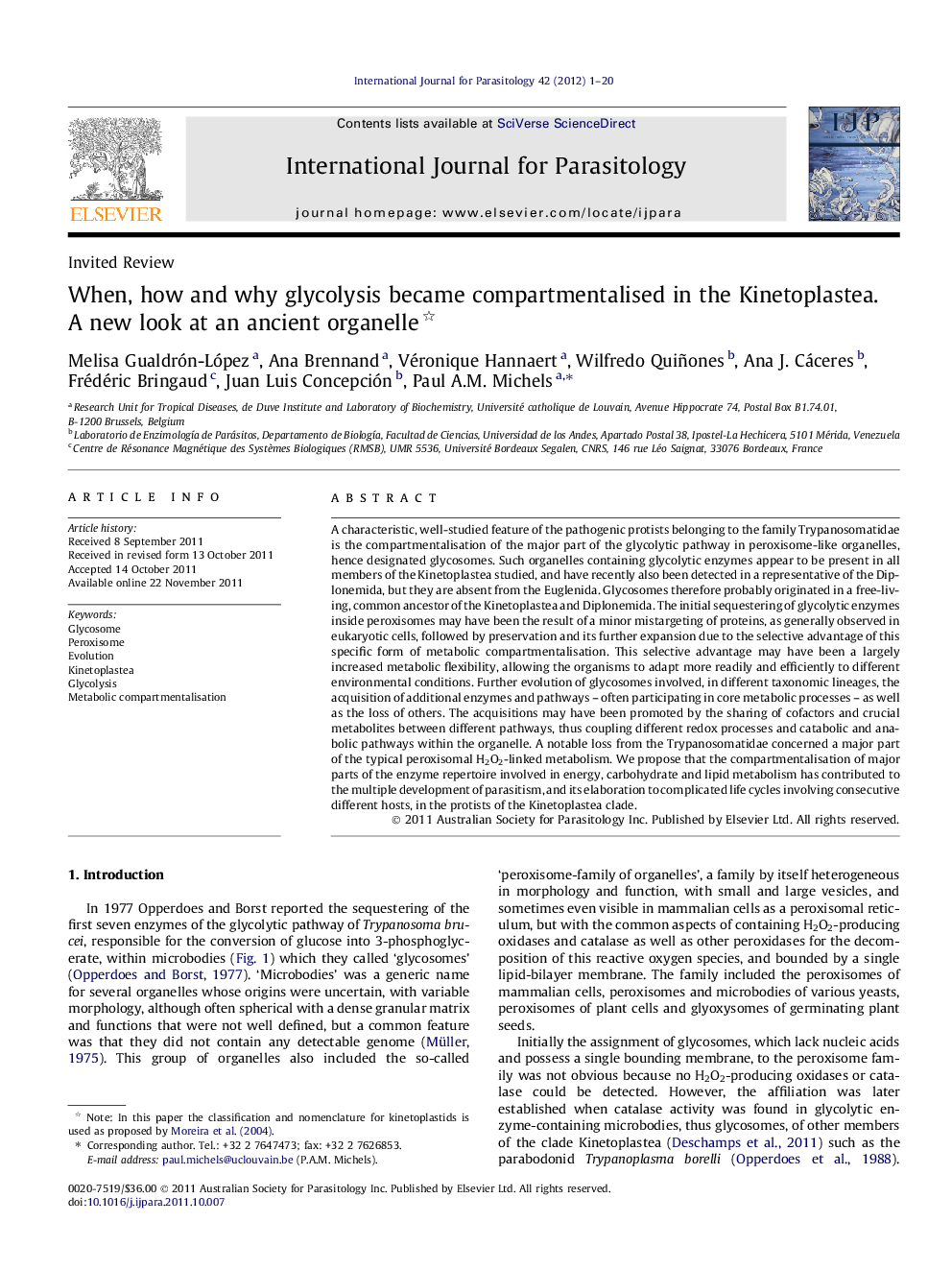| کد مقاله | کد نشریه | سال انتشار | مقاله انگلیسی | نسخه تمام متن |
|---|---|---|---|---|
| 2436127 | 1107277 | 2012 | 20 صفحه PDF | دانلود رایگان |

A characteristic, well-studied feature of the pathogenic protists belonging to the family Trypanosomatidae is the compartmentalisation of the major part of the glycolytic pathway in peroxisome-like organelles, hence designated glycosomes. Such organelles containing glycolytic enzymes appear to be present in all members of the Kinetoplastea studied, and have recently also been detected in a representative of the Diplonemida, but they are absent from the Euglenida. Glycosomes therefore probably originated in a free-living, common ancestor of the Kinetoplastea and Diplonemida. The initial sequestering of glycolytic enzymes inside peroxisomes may have been the result of a minor mistargeting of proteins, as generally observed in eukaryotic cells, followed by preservation and its further expansion due to the selective advantage of this specific form of metabolic compartmentalisation. This selective advantage may have been a largely increased metabolic flexibility, allowing the organisms to adapt more readily and efficiently to different environmental conditions. Further evolution of glycosomes involved, in different taxonomic lineages, the acquisition of additional enzymes and pathways – often participating in core metabolic processes – as well as the loss of others. The acquisitions may have been promoted by the sharing of cofactors and crucial metabolites between different pathways, thus coupling different redox processes and catabolic and anabolic pathways within the organelle. A notable loss from the Trypanosomatidae concerned a major part of the typical peroxisomal H2O2-linked metabolism. We propose that the compartmentalisation of major parts of the enzyme repertoire involved in energy, carbohydrate and lipid metabolism has contributed to the multiple development of parasitism, and its elaboration to complicated life cycles involving consecutive different hosts, in the protists of the Kinetoplastea clade.
Figure optionsDownload high-quality image (127 K)Download as PowerPoint slideHighlights
► Glycosomes evolved from peroxisomes in an ancestor of Kinetoplastea and Diplonemida.
► Glycosomes resulted from minor mistargeting of glycolytic proteins to peroxisomes.
► Glycosomes provided cells with the selective advantage of increased metabolic flexibility.
► During evolution glycosomes acquired and lost enzymes and pathways.
► The metabolic flexibility endowed by glycosomes promoted development of parasitism.
Journal: International Journal for Parasitology - Volume 42, Issue 1, January 2012, Pages 1–20